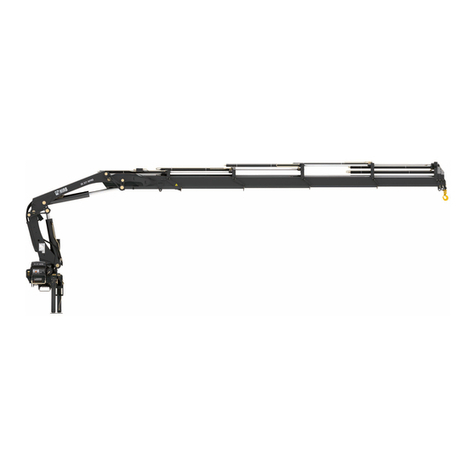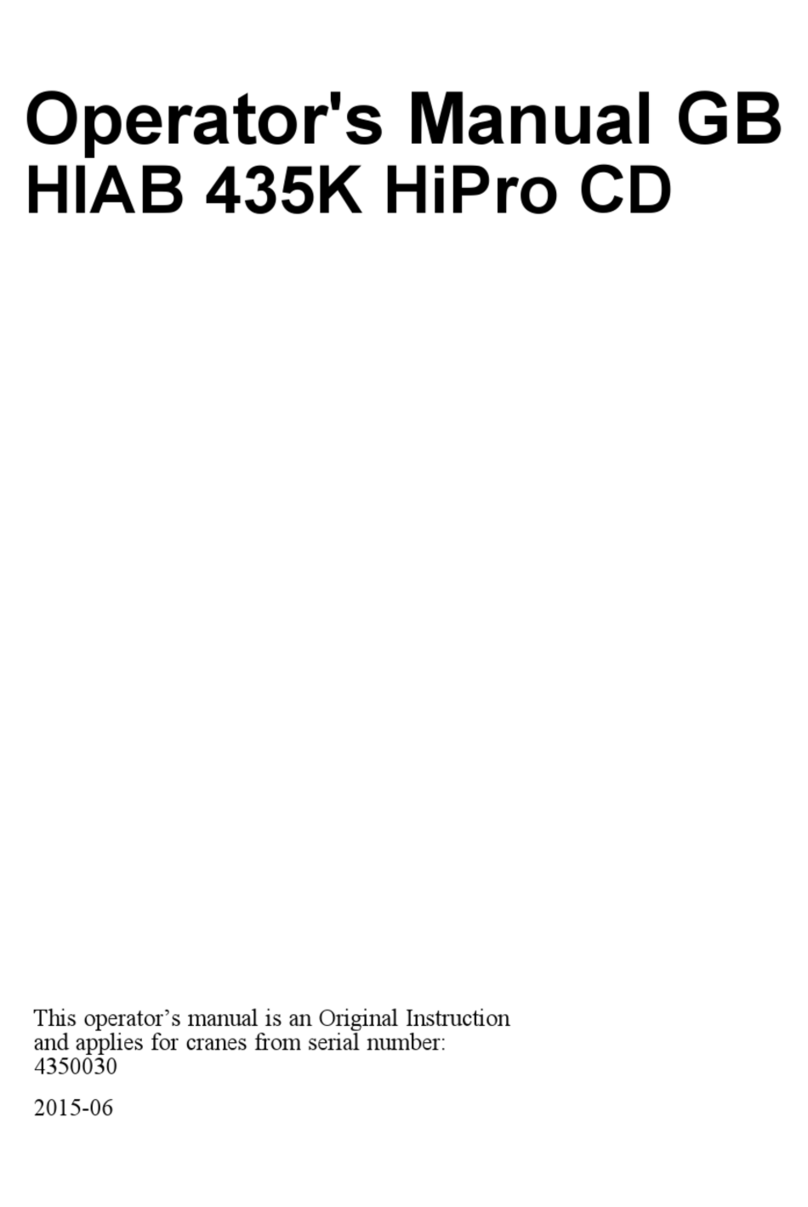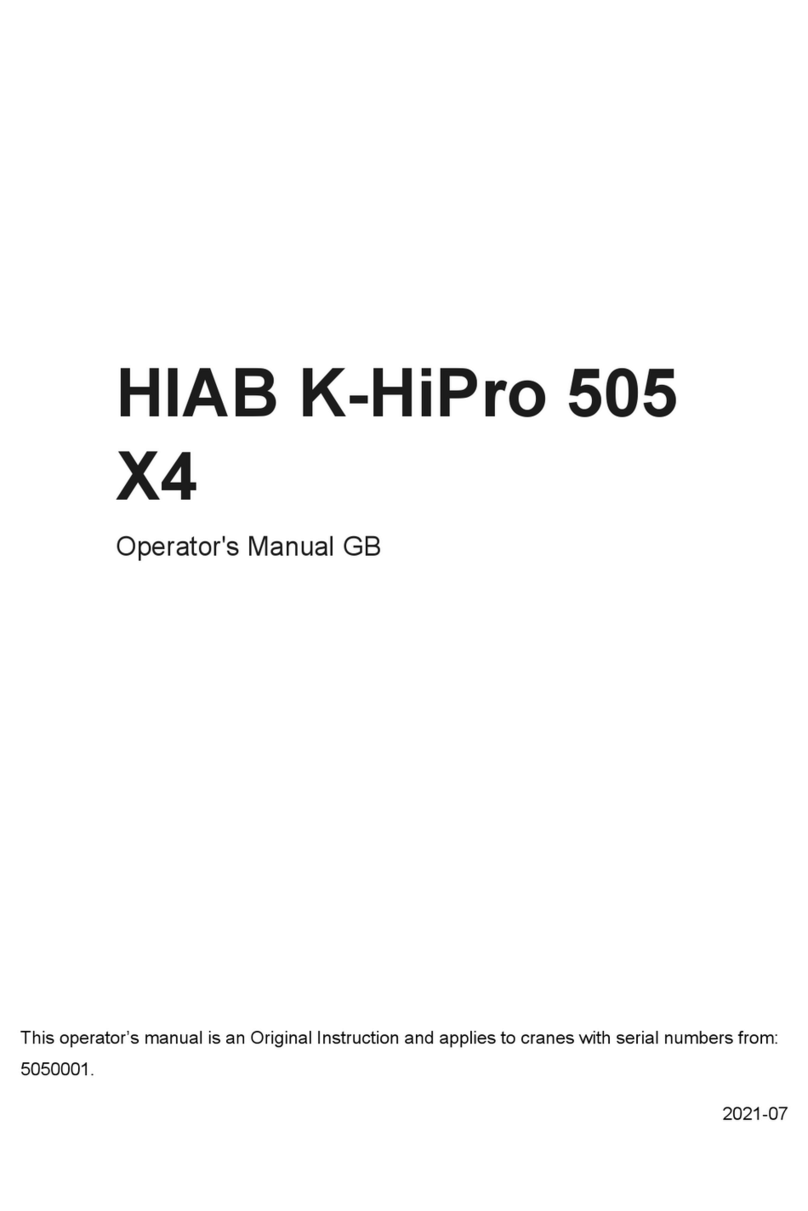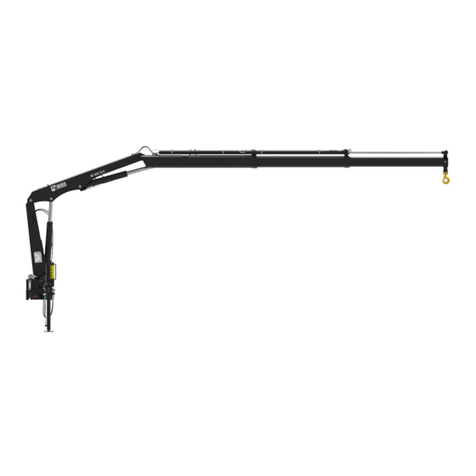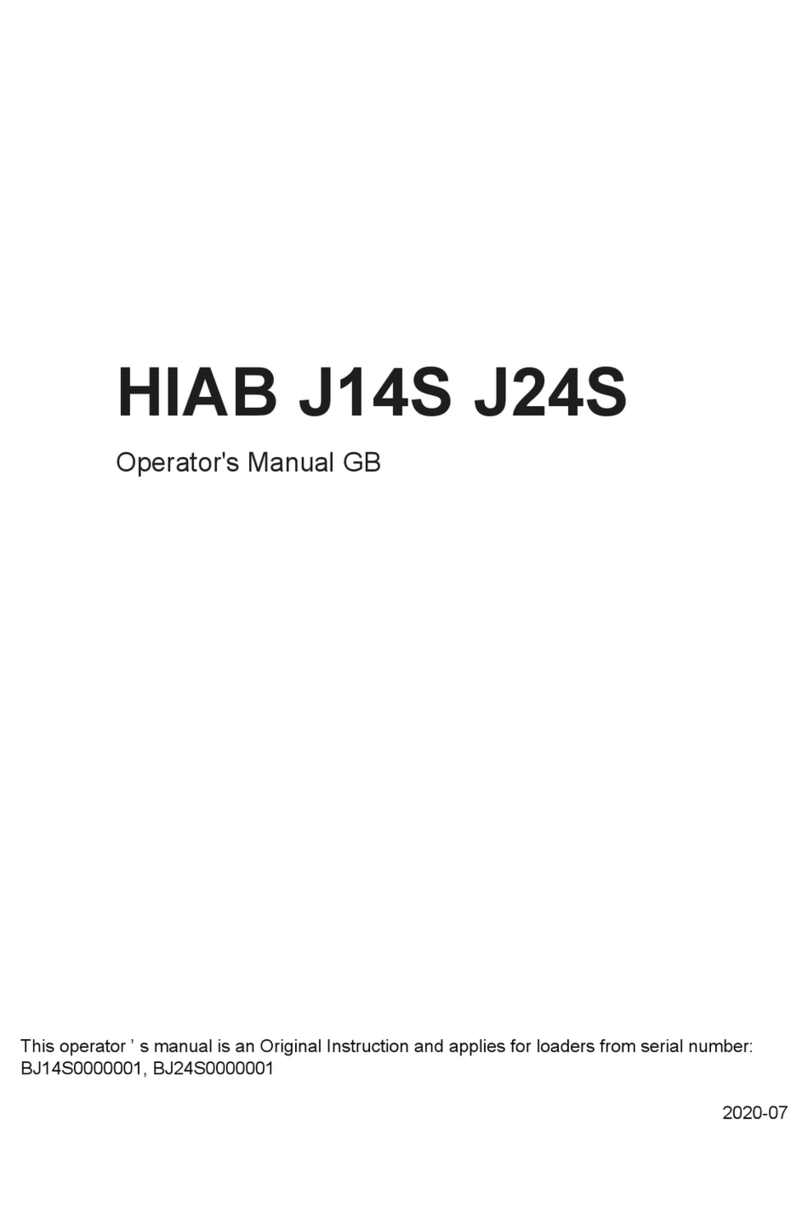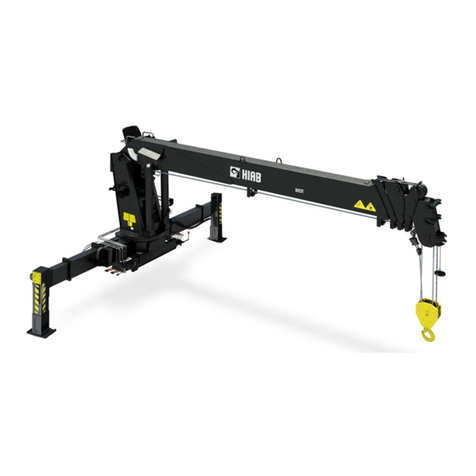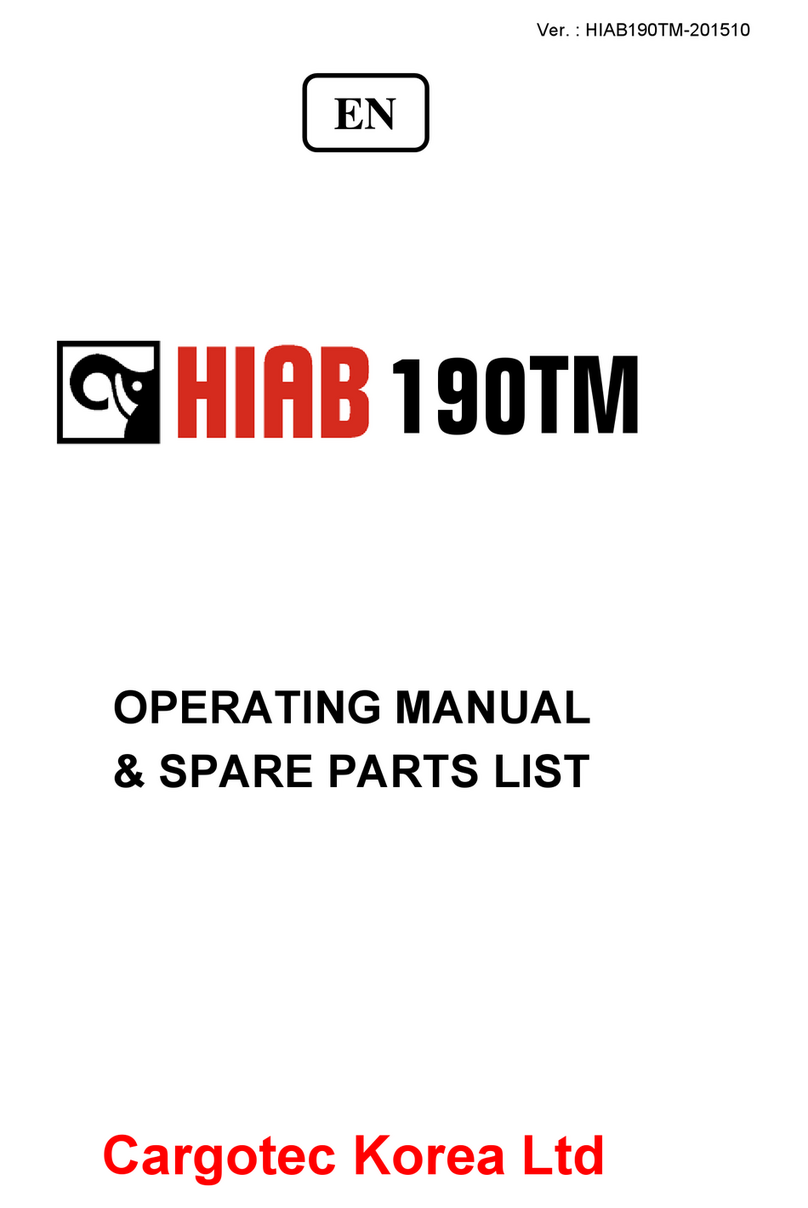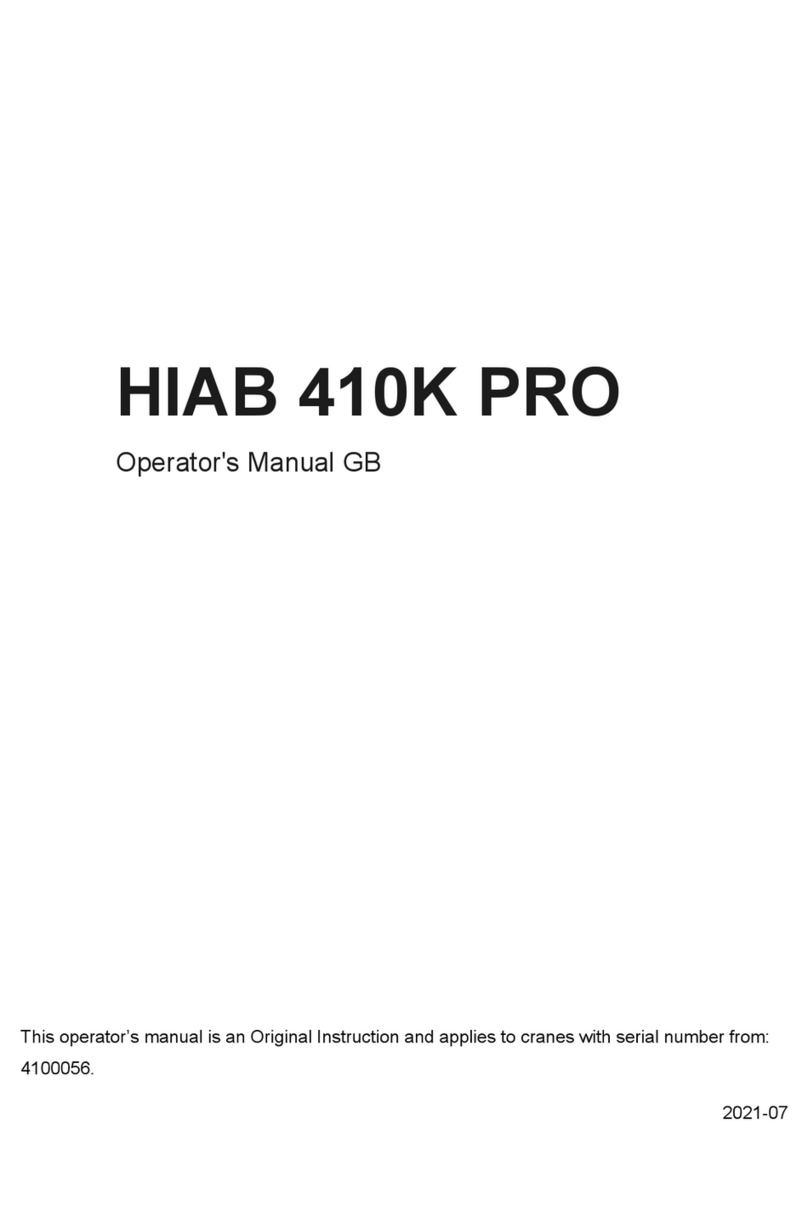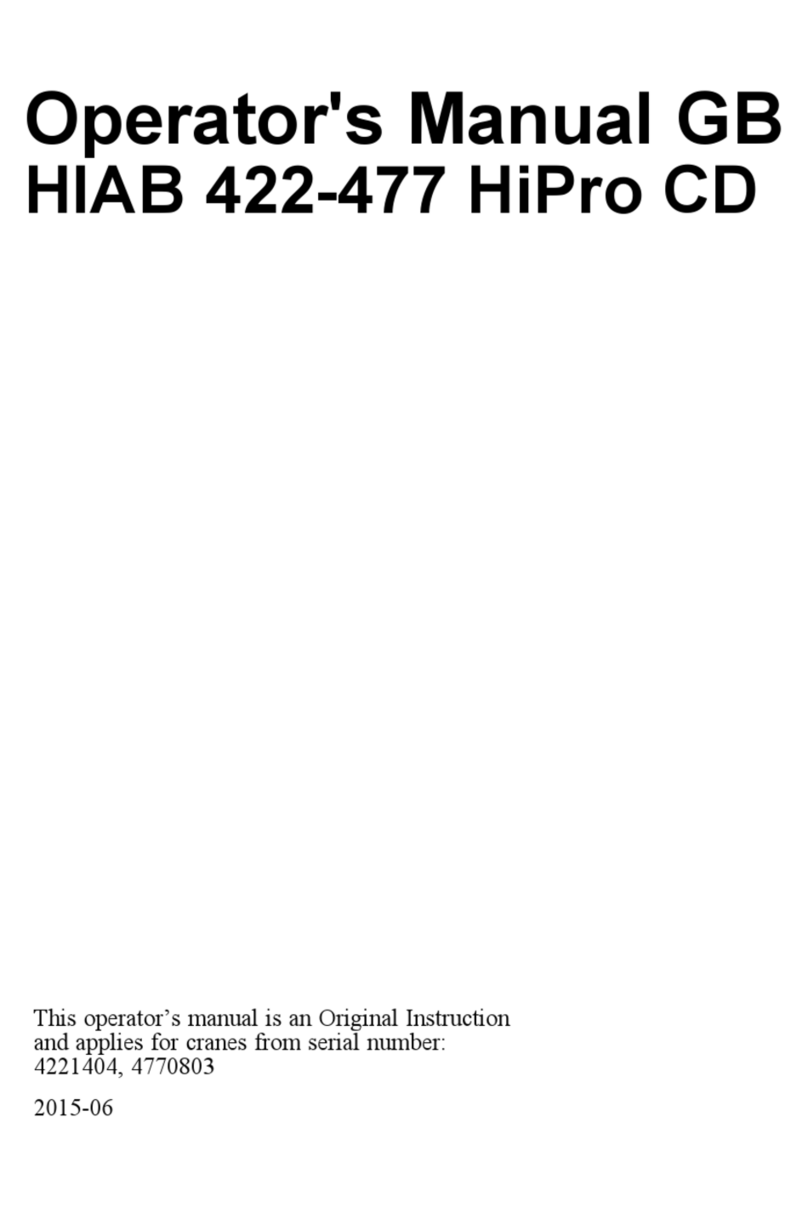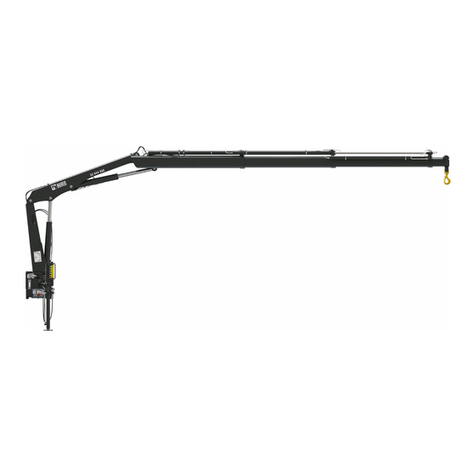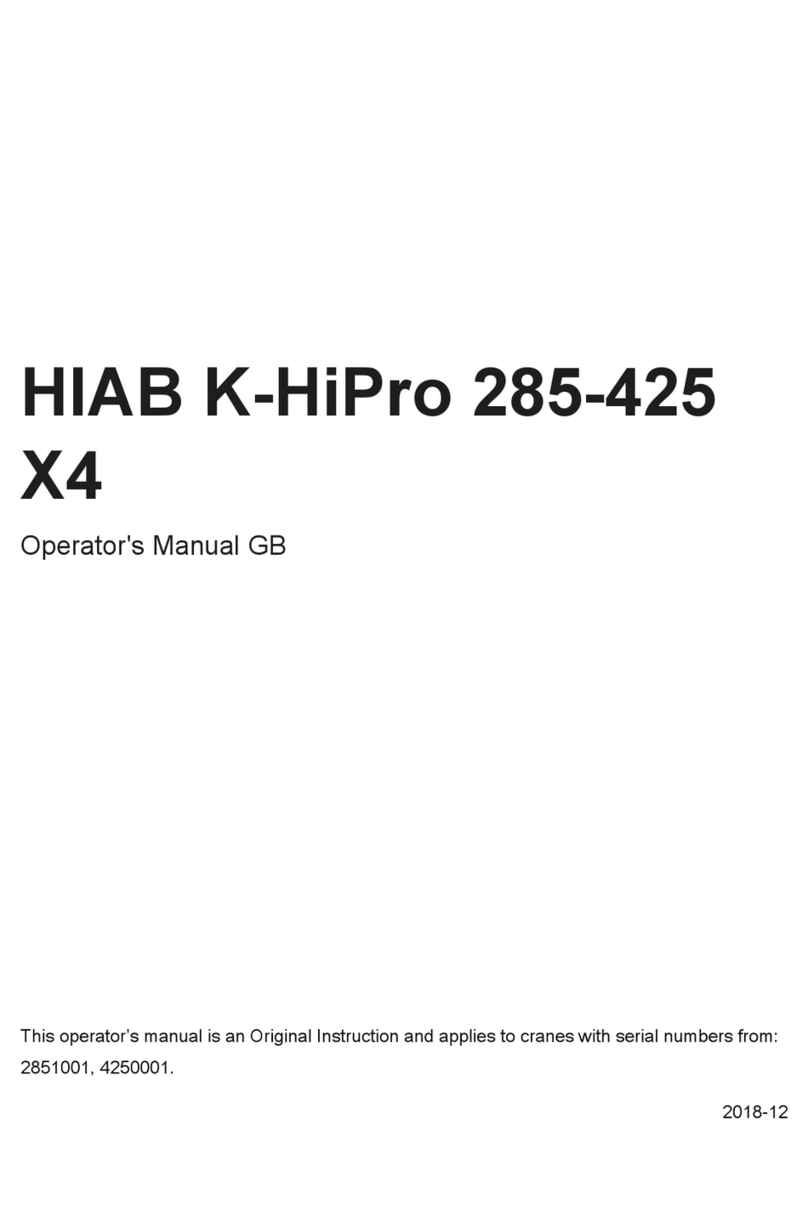
4.10.4. Standard functions and symbols ......................................... 49
4.10.5. Battery and battery charger XSDrive .................................... 50
4.11. CombiDrive controller ................................................................ 51
4.11.1. Displays ..................................................................... 51
4.11.2. Buttons ...................................................................... 54
4.11.3. Menus, standard functions and symbols ................................ 55
4.11.4. Battery and battery charger ............................................... 59
5. Starting crane operation ........................................................................ 61
5.1. Starting operations [AR+] ............................................................. 61
5.2. Set the stabiliser system .............................................................. 64
5.2.1. Stabiliser system and ground conditions ................................. 65
5.2.2. Extend the stabiliser extensions ........................................... 66
5.2.3. Activate the stabiliser system .............................................. 67
5.2.4. Set the stabiliser legs [AR+] ................................................ 67
5.3. Operate the boom system out of transport position ............................... 70
5.3.1. BDA Boom Deployment Assistant [option] [AR+] ........................ 72
6. During operation ................................................................................. 74
6.1. Features ................................................................................ 74
6.1.1. Controlling the crane speed with the controller XSDrive ................ 74
6.1.2. Controlling the crane speed with the controller CombiDrive ........... 74
6.1.3. Supervision of spools ....................................................... 75
6.1.4. OPS Operator Protection System [option] ................................ 75
6.1.5. APO Automatic power off .................................................. 76
6.1.6. ADO Automatic Dumping of Oil ............................................ 76
6.1.7. ASC Automatic Speed Control ............................................ 76
6.1.8. ADC Automatic Duty Control ............................................... 77
6.1.9. PFD Pump flow distribution ................................................ 77
6.1.10. Slewing sector [option] .................................................... 77
6.1.11. LSS-V Load stabilising system-vertical [Option] ........................ 78
6.2. OLP (Overload protection) ........................................................... 78
6.2.1. OLP - indications on the controller ........................................ 79
6.3. To release OLP ........................................................................ 80
7. Ending crane operation ......................................................................... 82
7.1. Operate the boom system into transport position .................................. 82
7.2. Placing the stabiliser system in the transport position [AR+] ..................... 83
7.2.1. Retract the stabiliser extensions ........................................... 86
7.3. Switching off the control system ..................................................... 87
7.4. Emergency operation Valve-V200 ................................................... 87
7.5. Transport warning [option] ............................................................ 89
8. Maintenance and Service ....................................................................... 91
8.1. Service .................................................................................. 91
8.2. Warranty ................................................................................ 92
8.3. Follow the maintenance instructions! ............................................... 92
8.3.1. Daily inspection .............................................................. 95
8.3.2. Monthly inspection and maintenance ..................................... 99
8.3.3. Annual maintenance ....................................................... 100
8.4. Lubrication ............................................................................. 100
8.4.1. Lubrication schedule [AR+] ............................................... 102
8.4.2. Greasing the upper column bearing and three-point bridge ........... 103
8.4.3. Lubrication of the hooks ................................................... 103
4 HIAB L-HiPro 145/165/195/235
